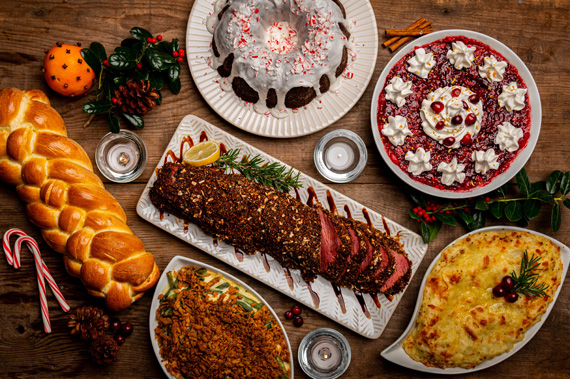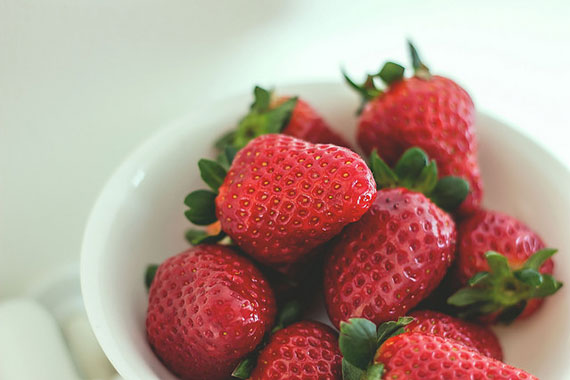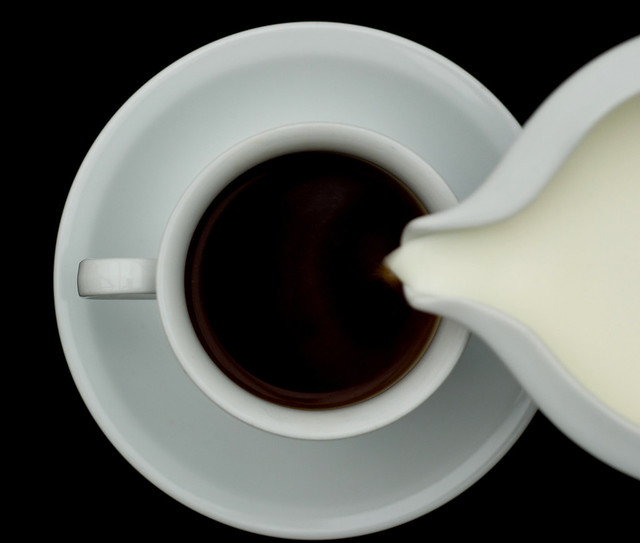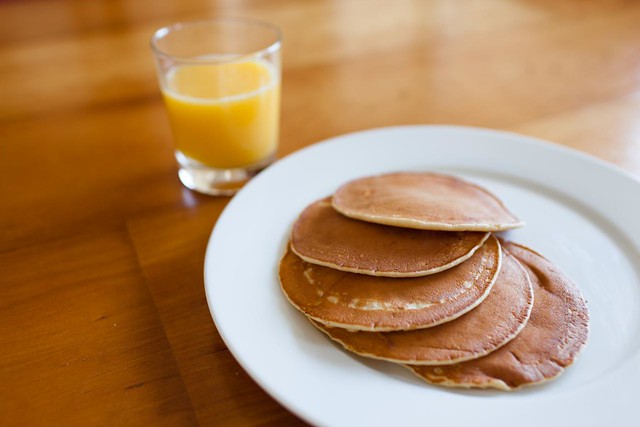Of all the types of photography that I am involved with, I seem to get more questions about food photography than just about everything else combined.

Photo by Jed Owen; ISO 100, f/5.6, 1/160s, 31mm.
I appreciate that not everyone who drives a car wants to know how the engine works so—with that principle in mind—I have prepared this checklist that should yield more than satisfactory results when photographing food:
- Blur the background.
This forces the focus to be on the food. A good photograph has to guide the viewer.
- Use a very narrow depth of field.
This strengthens the image by focusing the viewer’s attention even more.
- Use a window as the background but not with direct sunlight coming through.
This gives a light, airy feel to the photograph.
- Use fill flash otherwise the subject will be too dark.
The bright background would silhouette the food without some help from the flash

Photo captured by Stephanie Kilgast
- Diffuse flash with either greaseproof paper or purpose made diffuser.
Undiffused flash light is very harsh and causes hard shadows. Hard shadows are the enemy of the food photographer.
- Shoot on a level with the food and not looking down on it.
People see the top down view every day. A different angle stimulates the brain. This angle also works best with the light through the window background.
- Make sure all ordinary household lights are switched off.
Different lights have different temperatures and camera sensors see this even though we don’t.
- Check that camera white balance is set for sunlight.
This will give the clean white light that the best food photography uses.
- If photographing in the kitchen, check that the range hood light is off.
Again, this is related to color temperature. The range hood light will cast a nasty orange glow over anything nearby.
- Use a tripod and either a remote shutter release or the timer on the camera.
This will make the image pin sharp by removing camera shake from the equation.

Photo by Wine Dharma; ISO 100, f/2.5, 1/80-second exposure.
- Use as low an ISO setting as the camera allows.
This will eliminate noise, which will make for a sharper looking image.
- Use white plates and a plain surface. Brushed stainless steel is ideal.
White plates and brushed steel give really nice understated reflections that add great depth to an image.
- Remove clutter. Leave only the plate and the food.
A simple compositional point helps the viewer to focus on the food.

“Coffee” captured by Filippo Diotalevi
- Don’t overfill the plate unless the photograph is for a fast food chain.
The reason for this is twofold. It helps the viewer and it contributes to the general airiness of the image.
- Use a sprig of a fresh herb to add a dash of color.
Food is often beige, and a splash color can really make an image come alive.
- Make the plate big in the image.
Obvious one this but the plate should occupy at least 80 percent of the width of the photograph.
- Don’t be scared to crop the plate. Use the plate’s edge as a compositional element.
A shot with just half of the plate in frame makes for a really pleasing composition.

“would you like some breakfast?” captured by Kalyan Chakravarthy
- On the computer use a little sharpening but not too much.
Generally speaking some sharpening is a good thing, but overdoing it makes the edges very unnatural looking.
- Crop to tighten up the composition if required.
It is best to get as close to the final composition as possible with the camera. Viewfinders do not always show the image exactly as it will appear in the final photograph, so a little cropping may be required.

Photo captured by Chad Miller
This may seem like a lot to remember, but it does become second nature very quickly. Remember, though, that these are only guidelines and not hard and fast rules. The best photographs are taken by those that are prepared to take risks and to learn from the process.
About the Author:
For more about food photography and minimalist cooking including examples of my photography check out my guest post on my wife’s blog Minimalist Cook. I have been fascinated by minimalism for many years, especially as it pertains to photography and the arts.
Like This Article?
Don't Miss The Next One!
Join over 100,000 photographers of all experience levels who receive our free photography tips and articles to stay current:






Are the photos shown, meant to be examples of how it should be done or how it should NOT be done? At least 3 of the images were looking directly or almost directly down on the food, one of the things the article says you should not do, e.g. cup of coffee and the first image in the article. The reader is confused by this. I like that image, but I am more interesting the image than the food!
Where should you focus? I took some pictures of a small piece of cake tonight, the result being the front is in focus, the back isn’t. I was at an angle lower than the picture of the shrimp, not even with the dessert. I wanted to be able to see the top of it.
Thanks for the great tips. The food I prepare looks good, but when I go to take that picture it fails. The tip about food almost always being beige! Great Tip! It never even entered my mind! Thanks for sharing
Vicky
wow.. looks yum..
Great list of pointers :)
Excellent post.
hi,
very thorough list. Thanks for sharing.
regards,
Vishal
Nice article. Very useful.
I would appreciate if you kindly advise on the type of lens to be used.
I love the “Coffee” shot.
Nice food photography. i like it
Hey hey do you stop eating the food, i seem to end up with pics of crumbs on a plate
Hey Joe: I bet you used a very wide aperture. If I was using a tripod, I’d bring the aperture down until all I want is in focus.